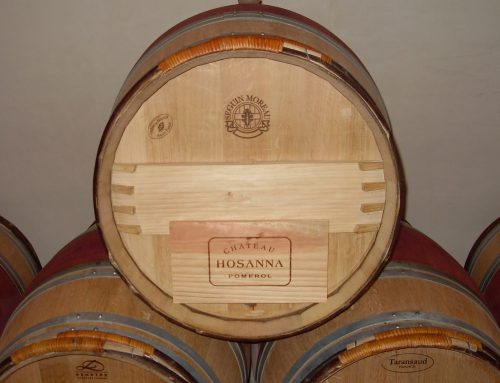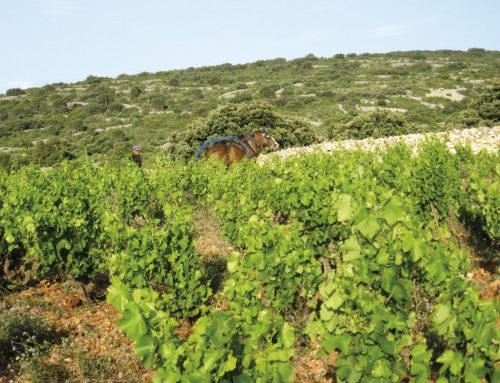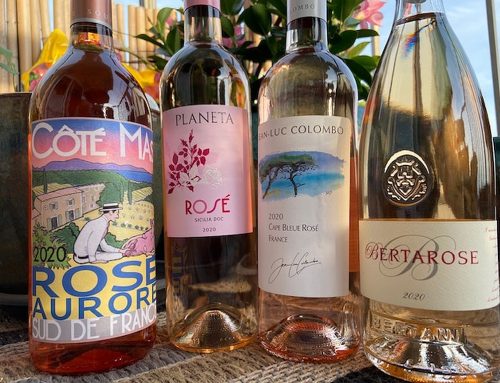Winemaker Pierre Seillan’s Chateau Lassegue wines are rooted in his quest for the perfect oak tree.
Bordeaux wines are made from blending grapes and aging them in French oak barrels. In 1990, Jess Jackson, founder of the wine conglomerate Kendall-Jackson Wine Estates, partnered with John Boswell, whose company was supplying oak barrels to Jackson Estates. They purchased a French saw mill and converted it to a stave mill, Merrain International, which gave them better quality control of the oak.
Nearly all French oak barrels come from trees in the forests owned by the French government; considered national treasures, the forests cover more than 20 percent of France. Seillan said that until he joined Jackson’s enterprise, he spent a lifetime at the mercy of various coopers for information about which forests the oak trees came from, and the length of time and the methods used for treating the staves that formed his barrels. But now, “I have the luxury to choose the forest and select the trees that I want for my staves.”
In October, I accompanied Seillan to the Darney forest in the northeastern corner of France. I wanted a better understanding of such a vital part of the winemaking process and Chateau Lasseque; we were joined by Jean-Marc Pernigotto, the director-general of Merrain International.
Pernigotto said that the minimum cutting age of an oak tree is about 160 years, but the usual range is for the tree to be from 200 to 250 years old. To put that in perspective, it means that the tree Seillan selects today was sprouting when George Washington was president of the United States and reached its harvesting stage when America elected President Obama.
From the center section of the oak tree, Merrain International cuts its staves for Chateau Lassegue’s barrels. The staves age outdoors for at least two years, then are shipped to Boswell’s barrel making company in Bordeaux, Tonnellerie Quintessence. After the barrel is formed and toasted, it is delivered to Chateau Lassegue for Seillan to fill with wine.
Seillan’s oak selection gives Chateau Lassegue wines the vanilla, and at times, Earl Grey tea smokiness that French oak barrel can infuse into wine.
In 2003, the Seillan and Jackson families purchased Chateau Lassegue, a 17th-century chateau in Saint-Emilion. And as though Seillan’s ownership were preordained from his passion for oak trees, the land was originally known as “La Segue”, which means small forest.
The 2005 Bordeaux is one of the best vintages in modern times. Over the last year, I have tasted the 2005 Chateau Lassegue on a few occasions, including during my October trip. It is bursting with rich, black fruit flavors carried on integrated tannins. Seillan’s oak barrel selection and aging program contributed to the wine’s elegant texture and long, lingering finish. Seillan plans to send more of this excellent wine to the American market next spring. Don’t miss getting some of it. Currently, it retails for about $90.
Also in our market is the 2007 Chateau Lassegue. Seillan made a good wine in a difficult Bordeaux vintage. By reducing the aging time and the percentage of new French oak barrels, the 2007 Chateau Lassegue has a mellow black fruit, and black tea aroma and flavor, with balanced tannins and acidity. Drink the 2007 Chateau Lassegue while the 2005 matures in the cellar. It retails for about $65.
Seillan’s oak selection gives Chateau Lassegue wines the vanilla, and at times, the Earl Grey tea smokiness that French oak barrel can infuse into wine. But it’s done with a deft hand, which is not the case with some of Lassegue’s neighbors. In a world where winemakers use oak barrels like an overdose of wine makeup, it is refreshing to find Seillan understands that oak’s contribution to wine begins in the forest, is developed in the staves, and brought to fruition with a modest application in the cellar.








Leave A Comment